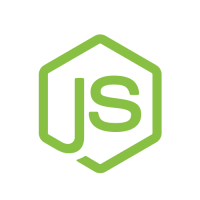Sometimes you want to block a person from signing into WordPress. Easily you can achieve this by removing the user account. However that will move all content written by this user to another user. What if we informed you that you can prevent a person without removing their account? In this article, we will show […]

How to Disable root Login in phpMyAdmin ?
In this guide we will show you how to restrict root login through phpMyAdmin.For this you have to edit phpMyAdmin configuration file config.inc.php and update following parameters: cd /usr/share/phpmyadmin # nano config.inc.php $cfg[‘Servers’][$i][‘auth_type’] = ‘cookie’; $cfg[‘Servers’][$i][‘AllowRoot’] = FALSE; If there is no config.inc.php file available, You can create it by copying config.sample.inc.php file at same location. # […]
How to use a SED in Linux
SED provides an effective and a flexible way of removing one or more lines from a specific file to suit the needs of the user. This Linux command is used for command line handling. […]
Disable ping response in Linux system
Usually ping is a small packet sent to a machine to check if machine is up. The ping response from an IP indicates the machine is up. You may want to disable ping replies for many reasons, may be for a security reason, or to avoid network congestion. […]

How to Upload Large Images in WordPress
Recently, one of our users getting error when uploading large images in WordPress. Many users face this error when trying to upload larger images in WordPress. It happens due to the file size limit. In this article, we will guide you how to fix this and upload large images in WordPress. […]

How To Install Node.js on Ubuntu 14.04
Node.js is a Javascript programming platform that allows users to build network applications very easily. Many developers want to build applications and libraries using JavaScript (server-side and client-side). In this guide, we’ll show you how to get started with Node.js on an Ubuntu 14.04 server. First of all make sure that all packages are up […]

How To Fix Yum Duplicate Packages or Broken Dependencies
We’ve been running CentOS 6.x for a couple of years on our VPS and yesterday began a standard yum update, the process failed with many duplicated packages and dependency errors or conflicts. In this post, I will describe under what situations yum errors can occur, and how to fix them. […]

Install PrestaShop on a CentOS VPS
PrestaShop is an open-source e-commerce application which allows you to maintain your own online store. It is very easy to use as well as very easy to install. In this article we will show you how to install and configure Prestashop on your CentOS VPS. […]
How to hide PHP version in Linux
Most of the web server software has been installed with default settings that will lead to information leakage. One of them is a PHP software. Later this information can be used by hackers to try to exploit any vulnerabilities in the PHP version you are running, especially if you are running an older version with […]

How to disable SELinux on CentOS:
By default, when we installed the Linux, The SELinux service is enabled, Some software’s do not support SELinux, So we need to disable or turn off the SELinux config. In this article we will show you how to disable SELinux on CentOS. […]